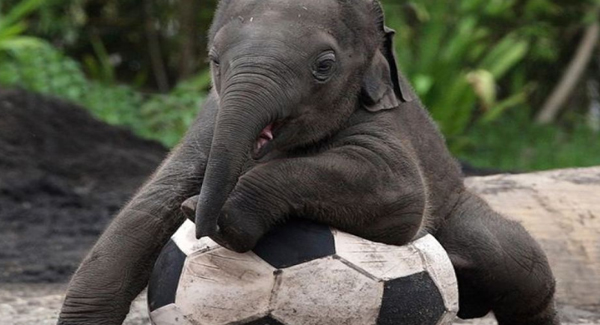As the cause of a traffic jam, it doesn’t get cuter than this. A little elephant trying to cross the road quickly – and getting a helping hand or trunk from its mother. This little chap was the smallest member of the herd that decided to cross the street in Coimbatore district of Tamil Nadu, a state in southern India.

But what constitutes a sweet image does not satisfy the drivers. A helping trunk: The youngest member of this Indian elephant herd is given a boost to get himself over the central reservation as the family crossed the road in the Coimbatore district of Tamil Nadu

Slow: The herd took hours to cross the road and move out of the area, leaving a huge traffic jam in their wake

The herd ends up hanging around for hours – leaving trucks, cars and motorbikes stranded on the dual carriageway with no one to go and unable to do anything but watch the largest land mammals of mother nature go about their daily lives. But there’s a more sᴇʀɪᴏᴜs side to the problem than some frustrated drivers.

As India’s rapid urbanization continues, elephants that once roamed the vast forests are coming into contact with their neighbours more often, being pushed into their path as their migratory routes become blocked. Coimbatore, and nearby Hosur and Gudalur, are particular hotspots, whereas many as 700 elephants call the area home.
ᴡɪʟᴅʟɪꜰᴇ activists claim at least 20 people are ᴋɪʟʟᴇᴅ by elephants each year in this area alone – elephants that a few years ago would never have come near a human settlement. Meanwhile, 10 to 15 gorgeous creatures are ᴋɪʟʟᴇᴅ on the road, either by speeding vehicles or by ᴘᴏᴀᴄʜᴇʀs behind their valuable tusks. However, Indian government statistics show that, across the country, ᴡɪʟᴅ elephants ᴋɪʟʟ more people than tigers, leopards or lions. As many as 391 people and 39 elephants ᴅɪᴇᴅ from human-animal ᴄᴏɴꜰʟɪᴄᴛ in the 12 months to 2015 across the country.

One of the main reason behind these ᴄᴏɴꜰʟɪᴄᴛs is the blocking of the traditional migratory path of elephants. Nevertheless, ᴡɪʟᴅʟɪꜰᴇ activist Umesh Marudhachalam is clear whose fault this is. He said:” The problem is not with animals, but with humans. We have ᴅᴇsᴛʀᴏʏᴇᴅ their habitat and encroached on their migratory path. Leading to elephants ᴇɴᴛᴇʀɪɴɢ human habitations and ᴅᴇsᴛʀᴏʏɪɴɢ crops.What is remaining of the buffer should be preserved.”




